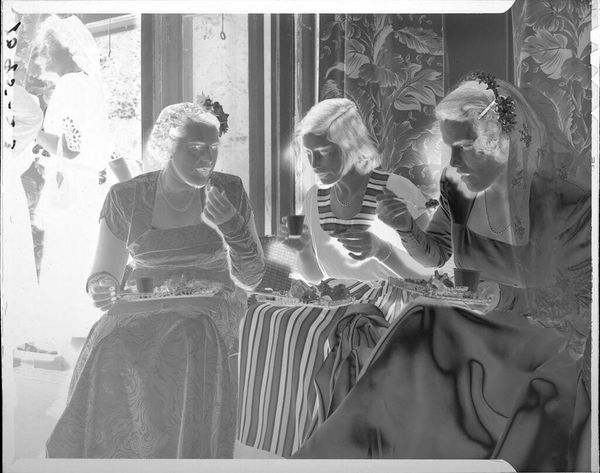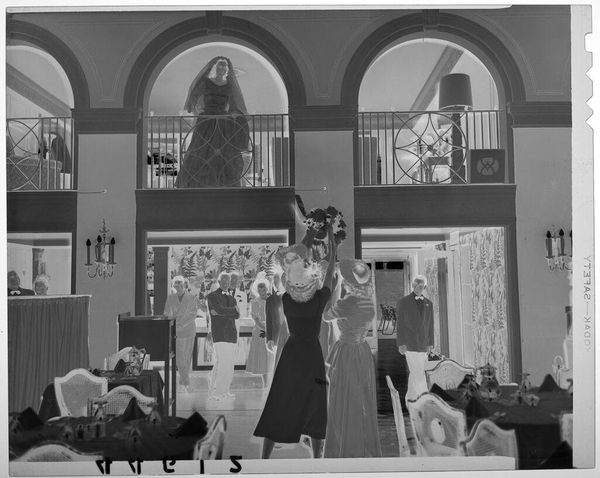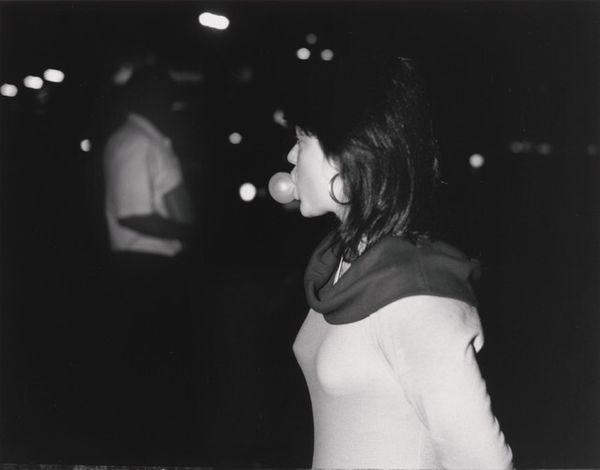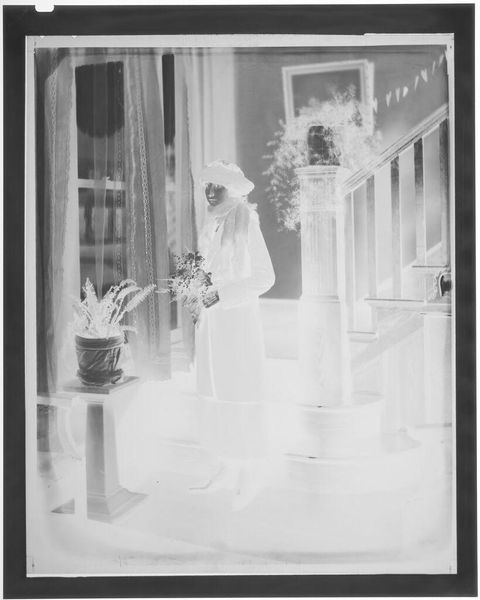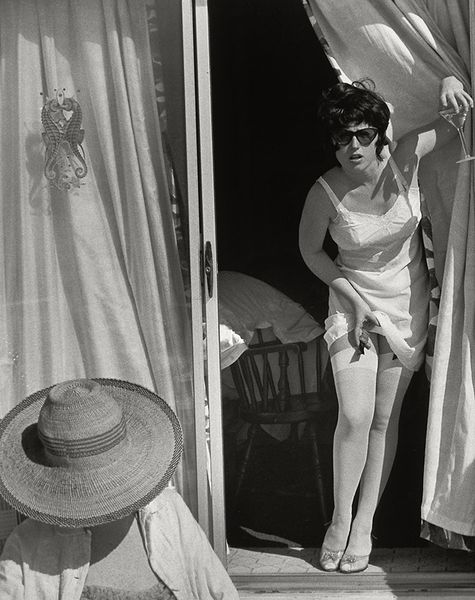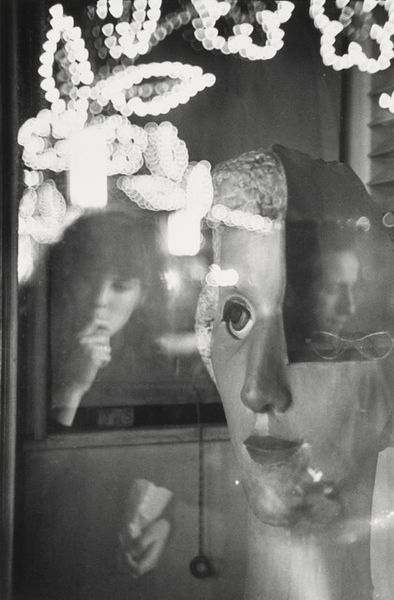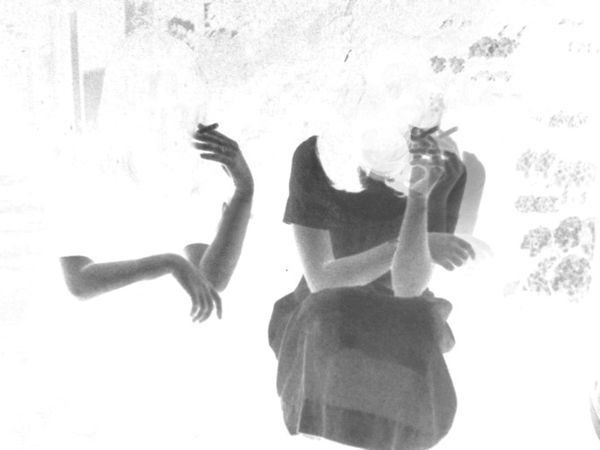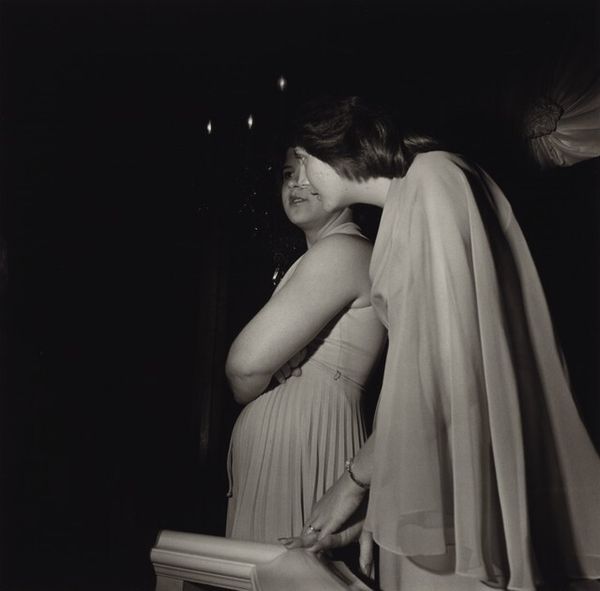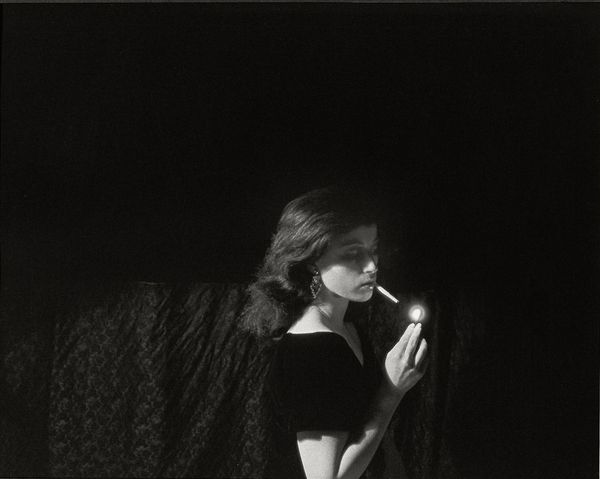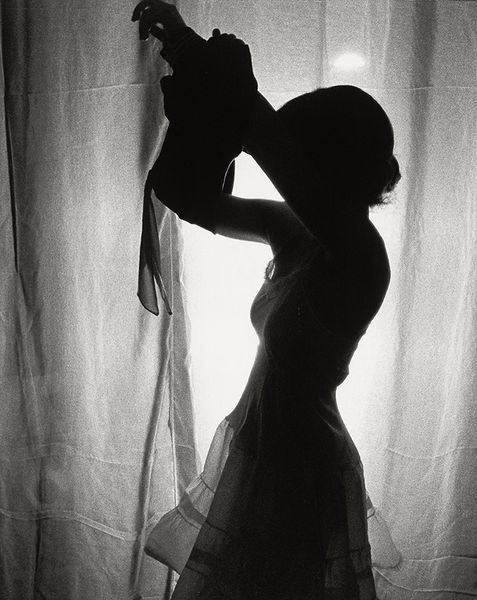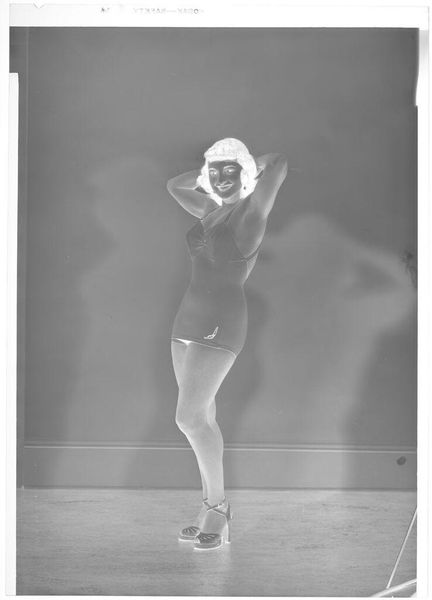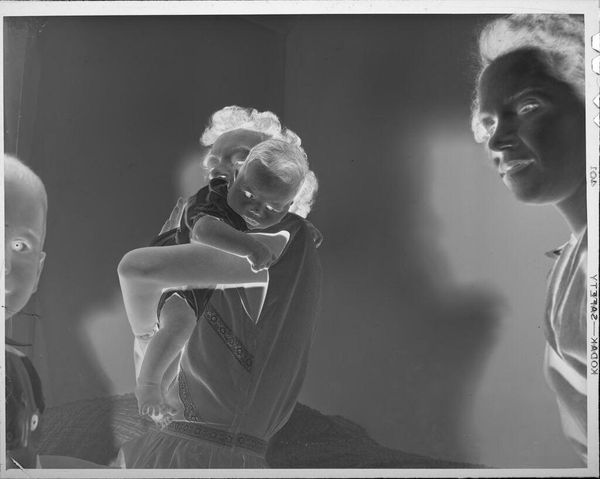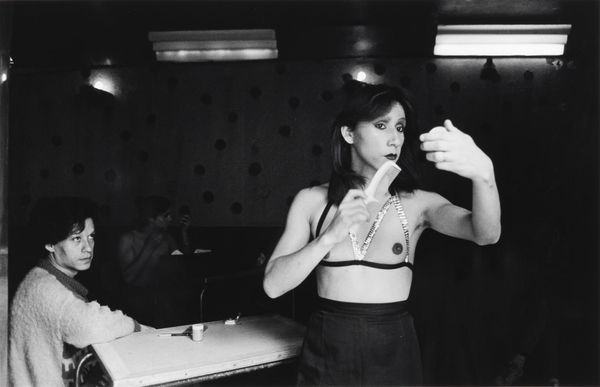
Store Window at Printemps, Paris (Vitrine magasin du Printemps, Paris) 1951
0:00
0:00
Dimensions: image/sheet: 30.48 × 23.97 cm (12 × 9 7/16 in.)
Copyright: National Gallery of Art: CC0 1.0
Curator: Ah, look, it's Sabine Weiss's "Store Window at Printemps, Paris" from 1951. The mood in this street photography feels almost dreamlike, doesn't it? Editor: Immediately striking, yeah. That gritty, film-grain texture pulls you right into that post-war Parisian street, the kids pressed against the glass. What were these kids buying that made them happy? That window display hides all types of production practices, though. I mean who benefits here, who has control? Curator: I love how Weiss captures the ephemeral—a moment of wonder in a crowd, all reflected in a window. Look at how the children’s faces blur with the display behind them, creating this layer of reality and fantasy all at once. Almost ghostly presences. What about you? Anything there beyond that? Editor: For sure, and notice that even a candid shot like this is also a manufactured tableau. You see that glass surface mediating between the producer and consumer here. Look closer at how department stores manufacture desire during this post war consumer boom. The kids in this photograph get close but they still dont touch it. It stays behind the glass, but the social conditioning that turns workers into customers becomes complete! Curator: Yes, there’s definitely that element, that consumer spectacle, which I think is why there is some tension that gets captured in her lens, but it goes deeper too. Like Weiss invites us to pause, consider, to connect. How do people on opposite sides interact through desire for consumer objects? In effect she reminds me that light isn't just documenting an event: it is an active character within the scene. Don’t you feel that? Editor: Of course, her choice to make it monochrome—to use light and shadow—to record the interactions and consumer practices is also an act. But what if, as cultural observers, we looked beyond to study the making of photographs like Weiss’s as products in their own right? How the media industry commodifies, markets, sells moments such as those we're examining in Paris through prints in a book? To reveal and examine all layers involved offers such a fascinating perspective. Curator: Indeed! It prompts such reflections that ultimately enrich our understanding of both her art and of ourselves. So, next time you happen across a storefront window, just take a moment, will you, and linger in the layers. Editor: Precisely. Think not only what’s for sale inside but whose labor and material inputs are obscured so we can see through clear glass.
Comments
No comments
Be the first to comment and join the conversation on the ultimate creative platform.
